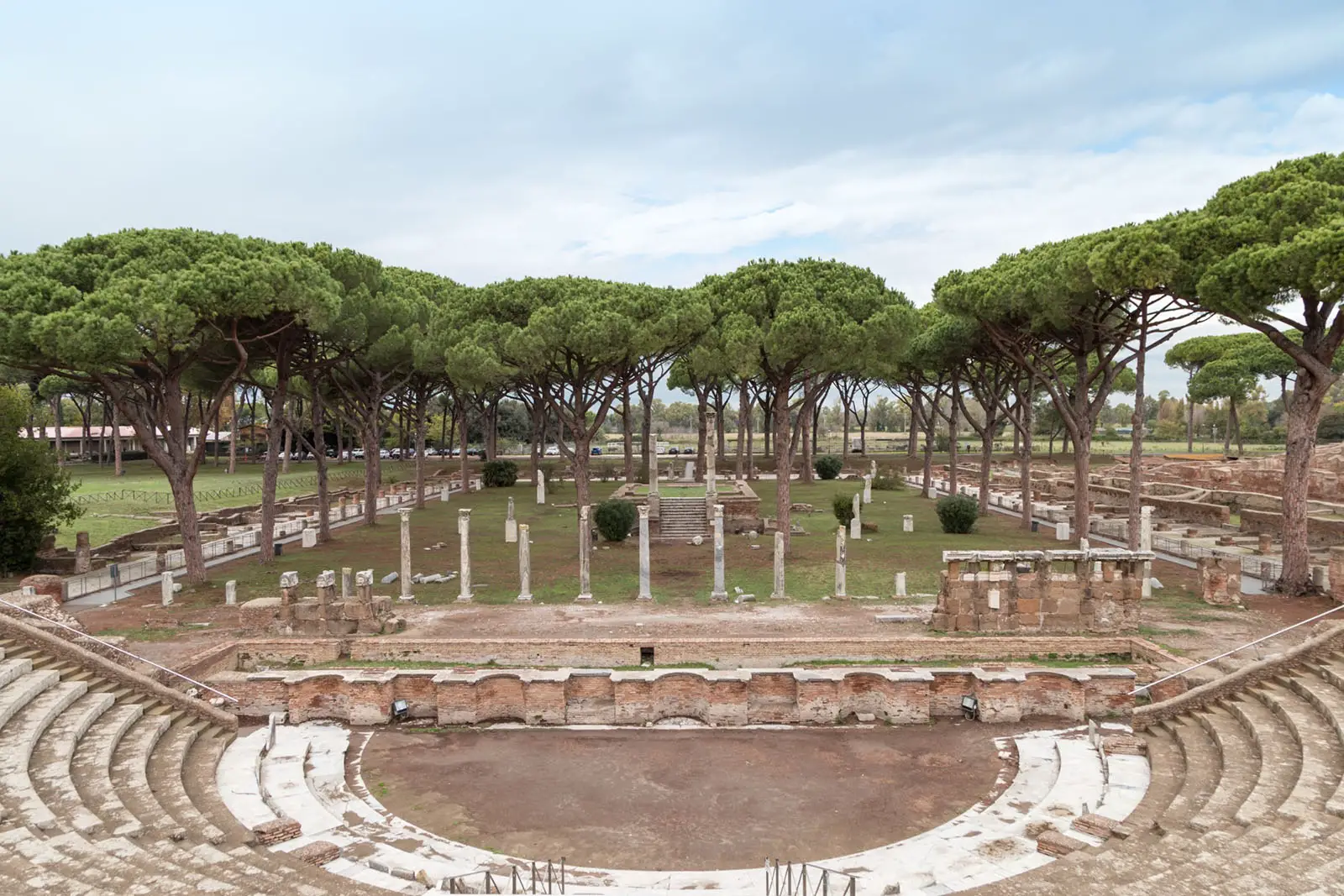If you’re looking for an interesting day trip from Rome, Ostia Antica is definitely worth a visit. This ancient harbor city was once an important part of the Roman Empire, and today its well-preserved ruins provide a fascinating glimpse into life in ancient Rome. You’ll find some impressive mosaics and frescoes here, as well as some of the best-preserved Roman architecture in the world. So if you’re looking for something different to do during your time in Rome, be sure to check out Ostia Antica!
Ostia Antica was once the most important port of the Roman Empire, and today it is a UNESCO World Heritage Site. The village is located just 25 kilometers southwest of central Rome, and it is well worth a visit for anyone interested in Roman history. The site includes the ruins of apartment blocks, a market, a baths complex, and many other fascinating features. Although Ostia Antica is now an abandoned village, it is easy to imagine the bustle of activity that would have taken place here in centuries past. A visit to Ostia Antica is a truly unique experience, and it is an essential stop for anyone interested in the history of the Roman Empire.
Ostia Antica is a large archaeological site, close to the modern town of Ostia, which is the location of the harbour city of ancient Rome
Ostia is a key archaeological site that provides valuable insights into Roman history. The name ‘Ostia’ is Latin for ‘mouth’, referring to its location at the mouth of the river Tiber. In ancient times, Ostia served as a major harbour city for Rome. Ships would bring in goods from all over the Mediterranean, and the harbour was a bustling hub of activity. Today, visitors can see the remains of the huge harbour basins that were built during the Ancient Roman period. The neighboring area of Portus was also an important center for trade and transportation. Although Ostia is now largely a ruin, it is still an awe-inspiring site that gives us a glimpse into the past.
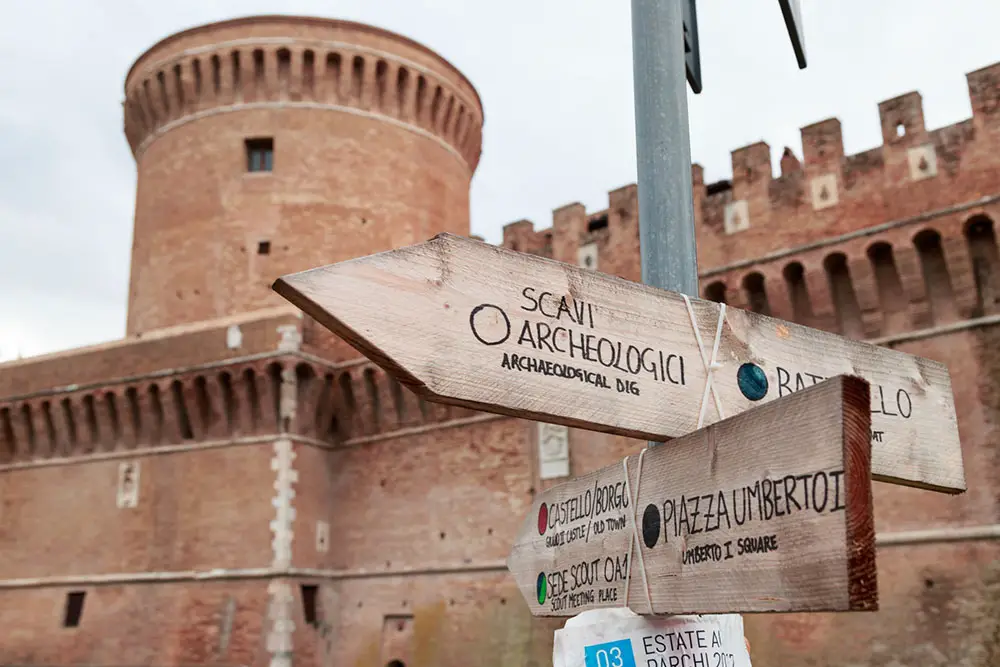
Ostia was founded in the 7th century BCE, and for centuries it served as ancient Rome’s primary port city. Situated at the mouth of the Tiber River, Ostia was ideally located to receive trade goods from all over the Mediterranean. The ancient Roman city was also a key military outpost, guarding Rome’s seaward flank. At its peak, Ostia covered over 300 hectares and was home to some 50,000 people.
Ostia was characterized by its warehouses and the seats of guilds. The city was much smaller than other harbour cities such as Alexandria and Carthage, but it nonetheless played a vital role in Rome’s economy. Goods shipped through Ostia included foodstuffs, oil, wine, marble, and other construction materials. The city was also home to a large number of artisans, who produced goods for the Roman market.
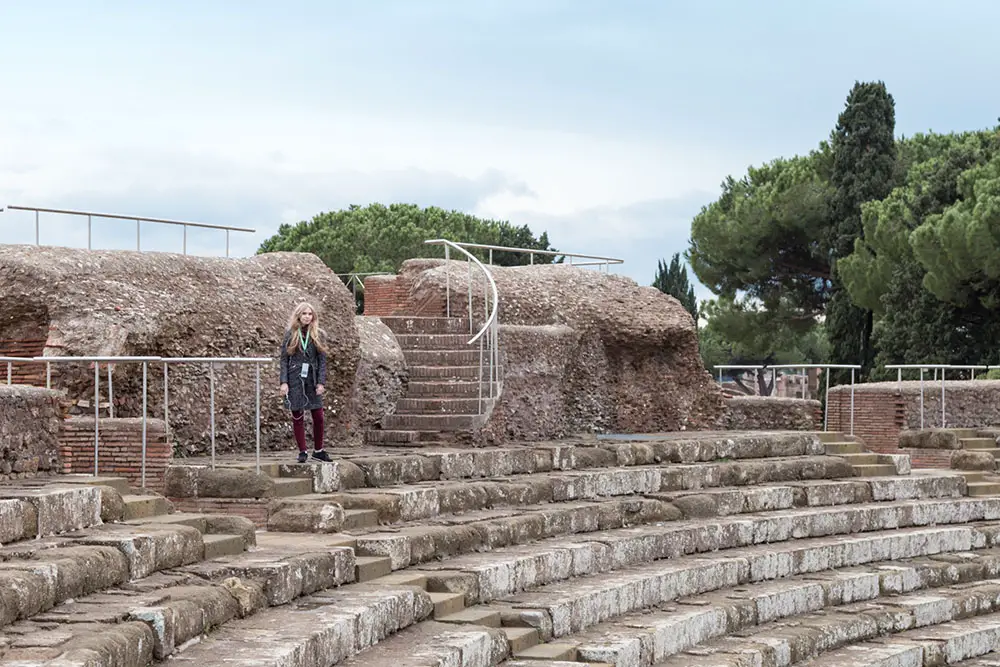
Today, the archaeological site holds many excavations, including a theatre built by Marcus Agrippa, houses, baths, and temples. There are also countless mosaics on display. It is believed that about two-thirds of the old city has been uncovered by the digs. Ostia Antica is an incredible place to learn about the history of Rome and see some of the most amazing archaeological discoveries.
The Ostian Way, a road that connected Ostia and Rome, was an important transportation route in antiquity. Today, visitors can still walk along this road, which is lined with ancient ruins.
The site has well-preserved buildings, magnificent frescoes, and impressive mosaics
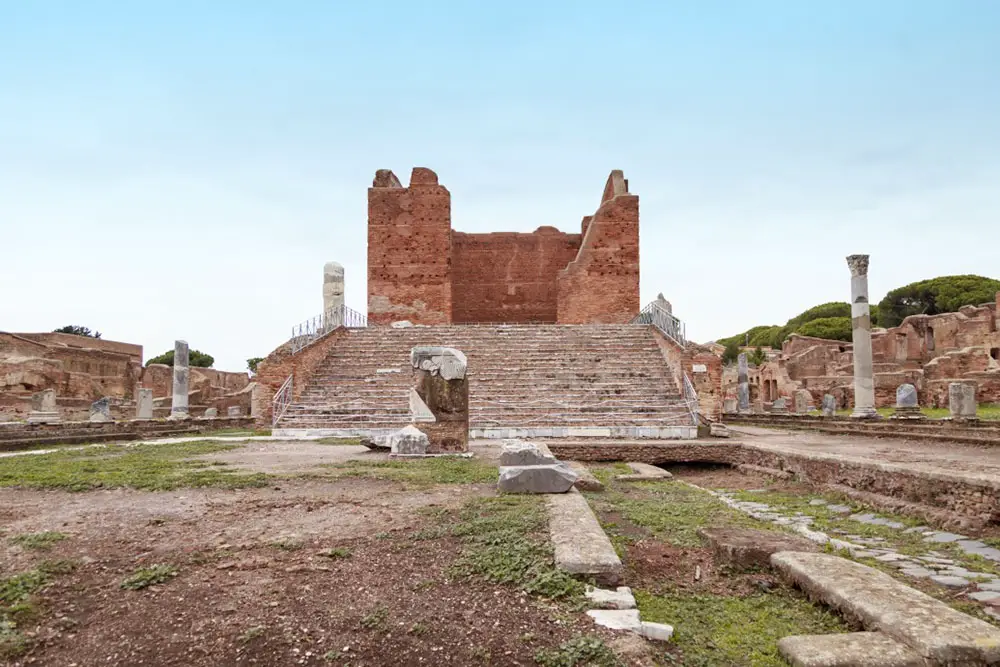
At the height of its prosperity in the early 2nd century CE, the population of Ostia was approximately 50,000. The growing population was accommodated by means of tall brick apartment buildings of three, four, and five stories. The floors in these buildings were paved with mosaic, and the walls were elaborately painted; the larger flats had up to 12 rooms. New baths, temples, and warehouses were built to support the thriving community. In addition to accommodating the needs of the growing population, these new structures also served to underscore Ostia’s status as a prosperous Roman city. The evidence for this prosperity is visible in the well-preserved ruins that have been unearthed in recent years. These ruins provide a tantalizing glimpse into the everyday life of Ostia’s ancient residents.
You may be surprised to find that Ostia Antica is one of the best-preserved Roman cities in Italy, despite its use as a source for marble and other construction materials. If you are wondering where the sea was during your visit (because it’s now several kilometers away), please know that these changes occurred with coastlines changing over time – along with rivers courses changing too! You’ll only see dry land instead of water views from certain spots around town nowadays!
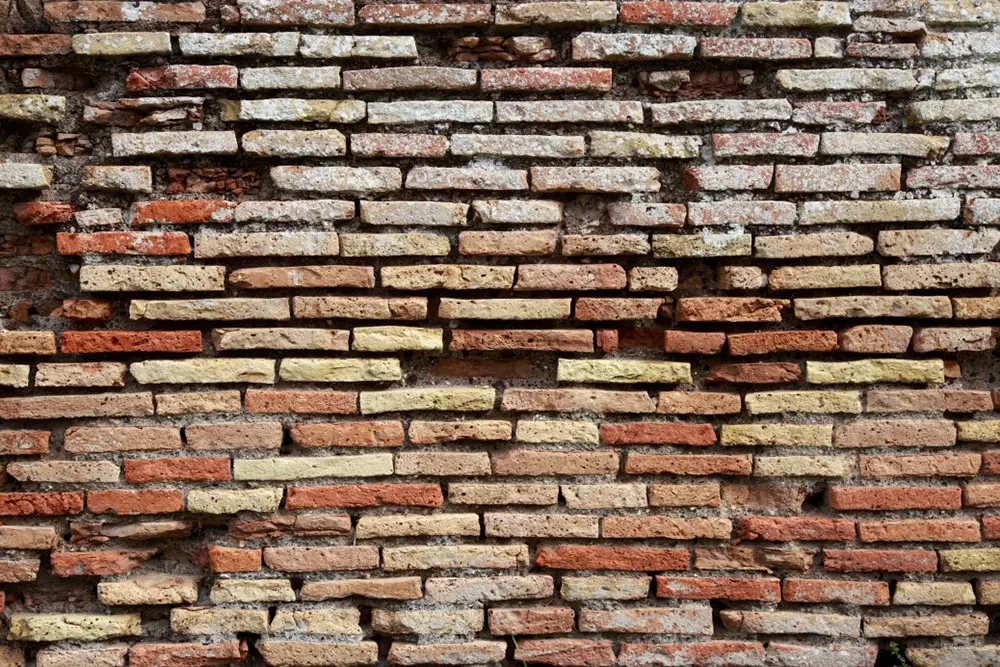
In the ancient city of Ostia Antica, the growth in wealth among the leading citizens raised the standard of public generosity. While public funds were restricted, magistrates were expected to show their appreciation of honors in a practical way. They did this by providing most of the sculptures that adorned the public buildings and public places, and by building most of the temples. As a result, the citizens of Ostia Antica enjoyed a higher quality of life than ever before. Thanks to the generosity of their leaders, they were able to benefit from beautiful works of art and from well-built religious structures. This was a time of great prosperity for Ostia Antica, and its citizens were able to enjoy a level of material comfort that was unheard of in other parts of the known world.
Ostia Antica Theatre
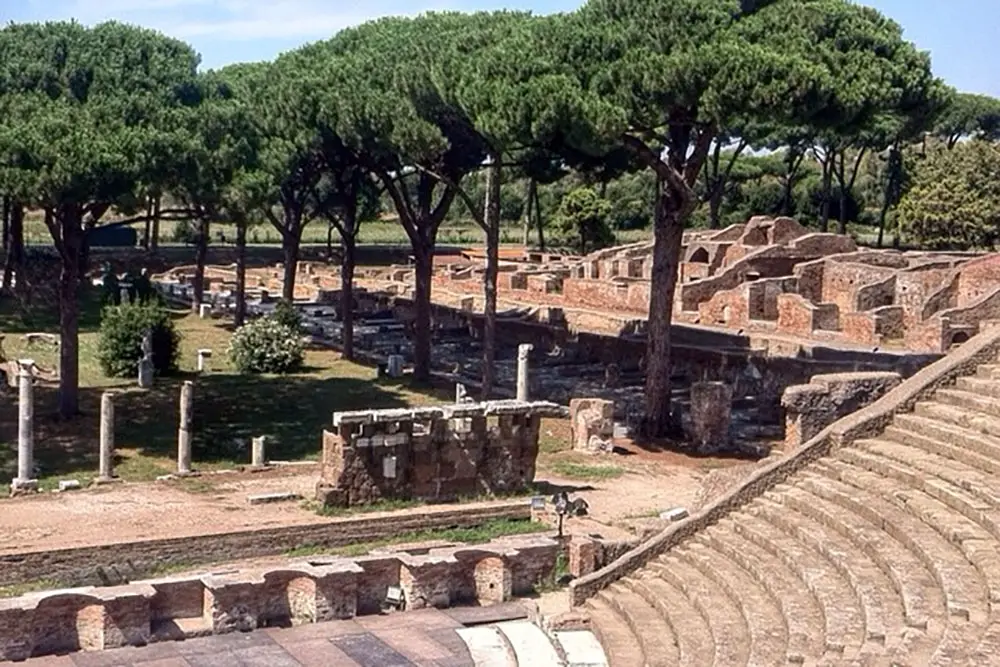
The Ostia Antica Theatre was built in the 1st century AD and is one of the best-preserved Roman theaters in the world. The theatre was originally used for plays and other public entertainment, but it was also used as a meeting place for political and religious gatherings. The theatre could seat up to 4000 people, and it had a large stage that was surrounded by pillars. The theatre was built using concrete and brick, and it has a unique arched roof that is supported by 55 rows of seats. The theatre was abandoned in the 5th century AD, but it was rediscovered in the 18th century and has since been restored to its original glory. Today, the Ostia Antica Theatre is a popular tourist attraction and is often used for cultural events.
Ostia Antica Baths
The Ostia Antica Baths were built in the first century AD and were in use until the Ostian aqueduct fell into disrepair in the seventh century. The baths are a large complex, with an area of over 6000 square meters (nearly two acres). The baths are entered through a large, imposing portico.
As any historian knows, the Roman baths were more than just a place to relax and take a dip. They were also an important part of Roman social life, providing a space for people to gather, socialize, and conduct business. The Forum Baths at Ostia, otherwise known as the Thermae Gavii Maximi, are a prime example of this. Named after Marcus Gavius Maximus, who was the praetorian prefect for 20 years, the baths were intended for public use in Ostia Antica. Like many other thermae, they were created as a gift to the public and were therefore free.
Baths of Neptune
An inscription was located in the Bath of Neptune which said that Hadrian built it between 1713 and 1515. Although much of its structures remain intact, the best part is the black-and-white mosaic tiles covering the floor of the Baths of Neptune. The mosaics at Ostia Antica can only be viewed above, and it is an ideal spot for viewing Neptune’s four-horse rides through the sea.
Who built Ostia?
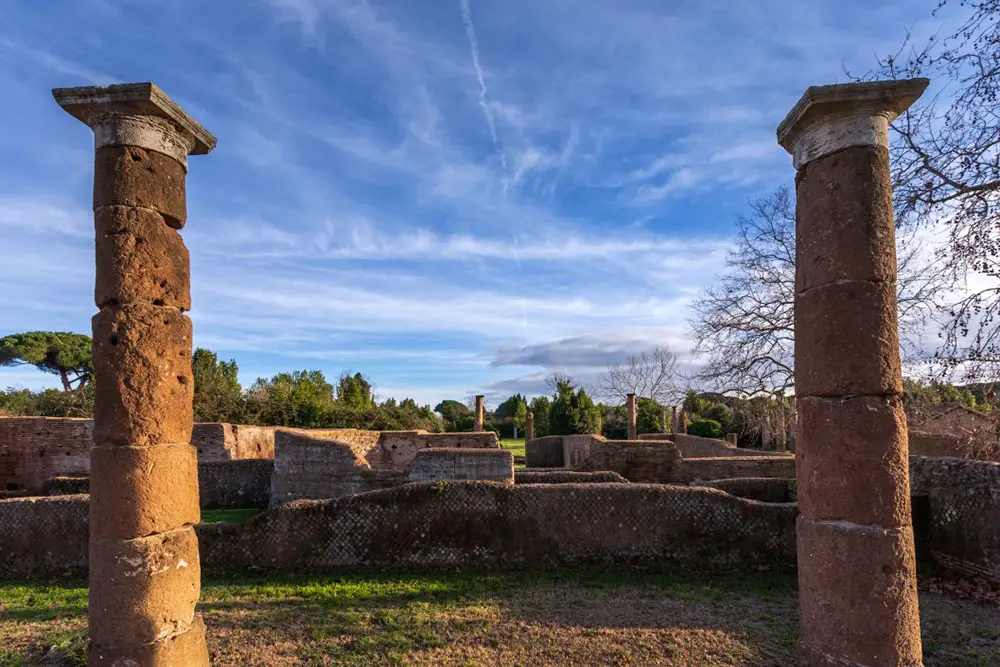
Ostia was founded in the 7th century BC by the Roman king Ancus Marcius, who also built Rome’s first port at the site. The city flourished as a trade hub for the next few centuries, but it went into decline after Rome’s sacking by the Visigoths in 410 AD. In the 6th century, Ostia was sacked by the Vandals, and in 849 it was pillaged by Saracen raiders. By the 9th century, the city was abandoned and slowly fell into ruin. However, Ostia’s fortunes began to change in the 20th century when it was rediscovered by archaeologists. Today, Ostia is a popular tourist destination, and its well-preserved ruins provide a glimpse into the life of ancient Rome.
As you walk through Ostia Antica, you can’t help but feel like you’re stepping back in time. This ancient harbor city is a fascinating look at the daily life of the Roman people.
Where in Italy is Ostia Antica?
Address: Via dei Romagnoli, 717, Rome, Italy
Take the Metro from Rome
The easiest and most convenient way to get to Ostia Antica from Rome?
Take the metro to Piramide station (line B) from the center of Rome. You then change at Piramide for the railway station to the Roma-Ostia train (Line RL Cristoforo Colombo). After 26 minutes, you arrive at Ostia Antica Station, where you have a 900-meter walk to the park.
Ticket prices
- Adults: €12
- Reduced: €2 (For EU citizens aged 18-25)
- Kids up to 18 years: Free entrance
- First Sunday of every month has free entrance for everyone
If you want to skip the line, then have a look at this small-group tour of the ancient ruins (from €67).
Don’t miss the official Tourist Guide (pdf) if you really want to dig into all of the histories of Ostia Antica.

